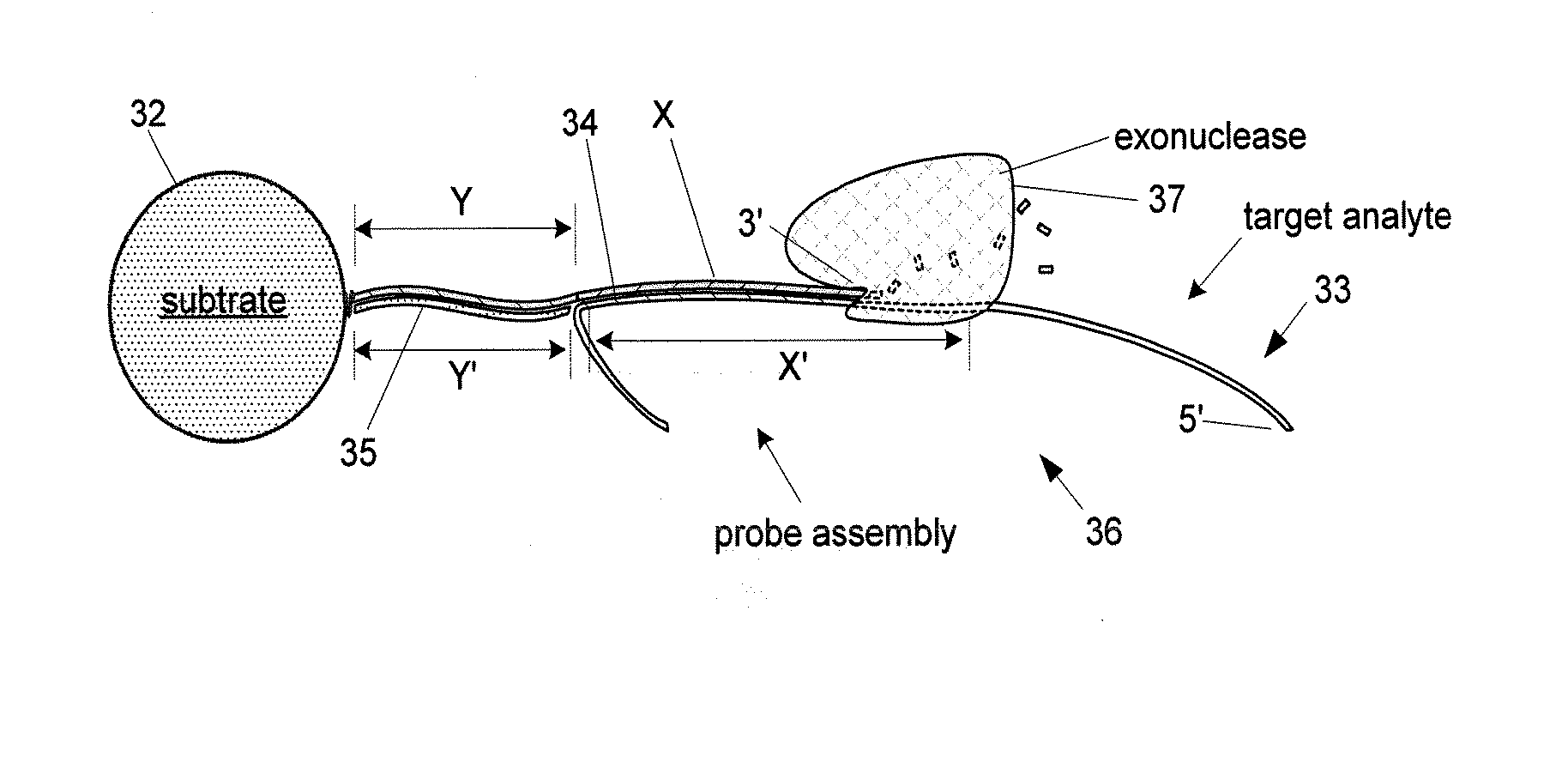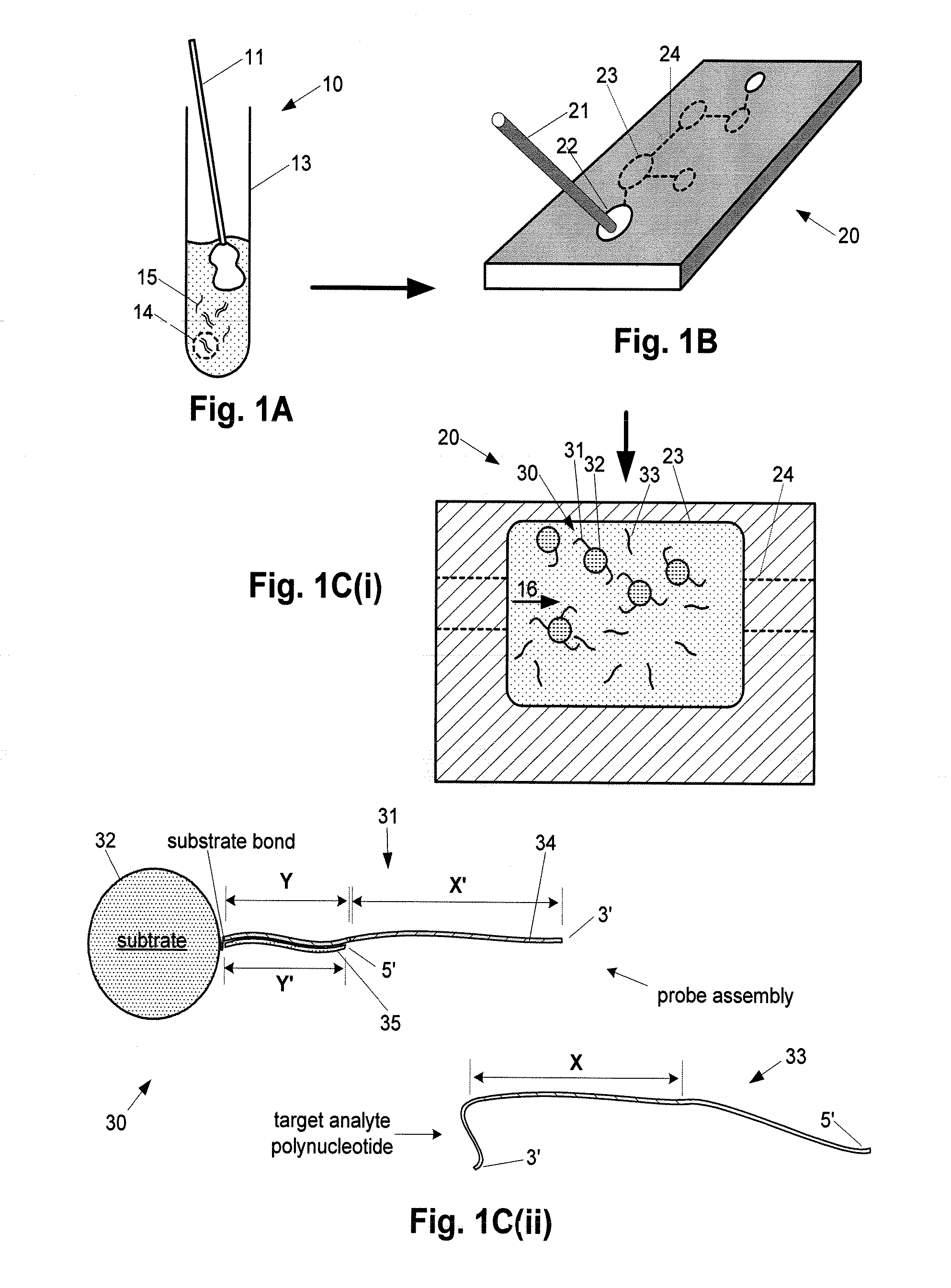Nanoelectronic Detection of Biomolecules Employing Analyte Amplification and Reporters
a biomolecule and reporter technology, applied in the field of biomolecule detection detection systems, can solve the problems of expensive, slow, complex, unlikely to be useful for routine medical testing, and the chemical reaction by which the dna is labeled is expensive and time-consuming
- Summary
- Abstract
- Description
- Claims
- Application Information
AI Technical Summary
Benefits of technology
Problems solved by technology
Method used
Image
Examples
examples a through i
[0223] Additional exemplary embodiments having aspects of the invention are described in Examples A through I set forth in the co-invented U.S. applications Ser. No. 11 / 318,354 filed Dec. 23, 2005 (see WO2006-071,895) and Ser. No. 11 / 212,026 filed Aug. 24, 2005 (see WO2006-024,023), each of which applications is incorporated by reference.
Multiple-stage Amplifiers (Power-law Amplification).
[0224]FIGS. 10-13 depict exemplary embodiments having aspects of the invention which provide for analyte-responsive enzyme-mediated amplification in a manner similar in a number of respects and operative schemes as the embodiments described above with respect to FIGS. 2 and 3, and wherein a multi-stage series of amplifier reagent species is employed.
[0225] In the embodiments of FIGS. 10-13, the product of the analyte-responsive enzyme reaction of an initial stage amplifier forms the substrate for the amplification of a second-stage amplifier, so as to produce a second amplification product upon...
example
Single-target Amplification With Fluorescent Detection
[0275]FIGS. 14A-14C illustrate an example of single-target amplification method having aspects of the invention (See, e.g., FIG. 3A) utilizing fluorescent detection, through one step of the method.
[0276] In this example, the amplifier capture probe sequence is configured to form an analyte-amplifier complex whereby the capture stand has a terminal non-protruding 5′ end, subject to degradation by a 5′>>3′ exonuclease. The enzyme used in this example is a T7 polymerase having 5′>>3′ exonuclease activity.
[0277] As described above several alternative embodiments of amplification and detection methods having aspect of the invention may be practiced employing a variety of nucleotide-active enzymes, including 3′-exonuclease, 5′-exonuclease, DNA polymerase (e.g., via proof-reading or nuclease activity), and the like. For example, T7 DNA polymerase has been demonstrated using methods of the invention. Similarly, alternative amplifier s...
PUM
| Property | Measurement | Unit |
|---|---|---|
| Time | aaaaa | aaaaa |
| Flow rate | aaaaa | aaaaa |
| Concentration | aaaaa | aaaaa |
Abstract
Description
Claims
Application Information
 Login to View More
Login to View More - R&D
- Intellectual Property
- Life Sciences
- Materials
- Tech Scout
- Unparalleled Data Quality
- Higher Quality Content
- 60% Fewer Hallucinations
Browse by: Latest US Patents, China's latest patents, Technical Efficacy Thesaurus, Application Domain, Technology Topic, Popular Technical Reports.
© 2025 PatSnap. All rights reserved.Legal|Privacy policy|Modern Slavery Act Transparency Statement|Sitemap|About US| Contact US: help@patsnap.com



